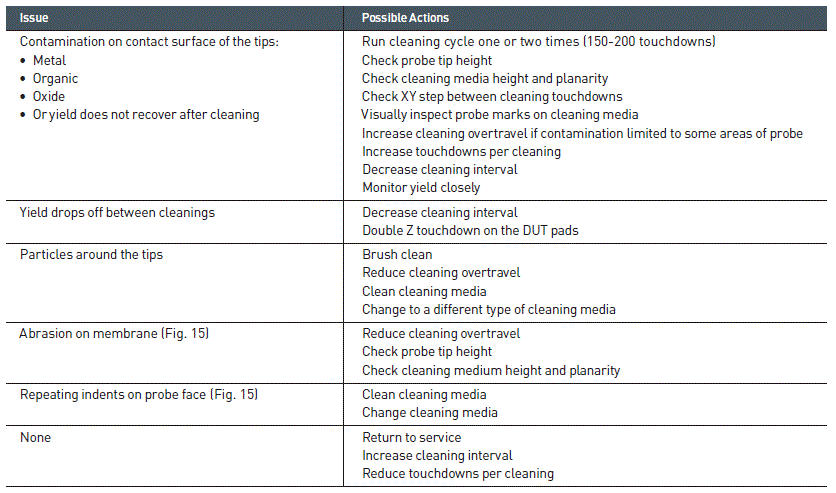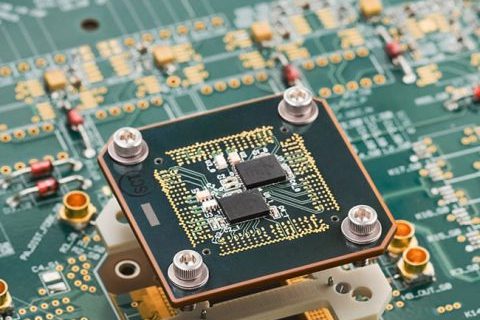We’ve shared a few posts here at our blog that will help you get the most from your .
This post will share some insights on balancing cleaning frequency versus the trade-offs of cleaning them too much.
Each time you abrasively clean a probe card, the abrasive may remove a small amount of probe tip material in addition to the contaminant. When developing a cleaning strategy for probe cards, a trade-off is made between the lifetime of the probe card and the test yield. Yield suffers if the probing-to-cleaning ratio is set too high. Alternatively, probe card lifetime and test equipment utilization suffer if the probing-to-cleaning ratio is set too low (see below). When developing your cleaning strategy, your objective should be to determine a probing-to-cleaning ratio low enough to minimize probe tip wear, but high enough to maximize yield.

If all tips are in contact, increasing cleaning overtravel on Pyramid Probe tips does not increase the foreign material removal rate. In fact, higher cleaning overtravel may accelerate the accumulation of particles from the cleaning substrate.
It is best to set the overtravel high enough to ensure that all tips contact the lapping film, but low enough to minimize particle generation from the film. Typical cleaning overtravel used in our factory environment is 35 to 75 μm.
Be sure to read our technical brief – Pyramid Probe: Online Cleaning Methods (PDF) – to determine the best cleaning parameters: cleaning interval, touchdowns per clean, and cleaning overtravel. The following table can also help in guiding your probe-to-cleaning ratio.

We hope these blogs on cleaning your Pyramid Probe will allow you to get the most from your probe card investment!


